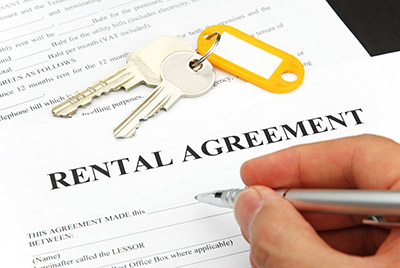Zeitgeist - Sign of the Times
 Multifamily is Firing on all Cylinders
Multifamily is Firing on all Cylinders
Since the start of the pandemic, the multifamily housing industry has proven its resiliency and after a year of flat to declining rents, national rent growth has again turned positive. According to Yardi Matrix’s June Multifamily National Report, rent growth increased 6.3% year-over-year to the highest level ever. Nine of the top 30 markets achieved double-digit rent growth over the same period with Phoenix leading the pack at 17%. In addition, June occupancy was at 96.5%, up from 95.7% in June 2020 and in line with the early 2000’s all-time highs. Several factors are contributing to the trend including record breaking home prices, a lack of new construction and wage growth across multiple industries. In parallel, costs are going up for landlords including utilities, repairs and maintenance and staff salaries.
The multifamily sales market has also been on a tear. Real Capital Analytics data shows record multifamily sales of $92.1 billion through the first half of 2021 – 64% higher than the first half of 2020 and 7% higher than the first half of 2019, the high watermark year with $191 billion in transaction volume. Record low interest rates are helping fuel this growth. Rates for seven- to ten-year fixed-rate loans – the standard in the multifamily industry – are between 2.75% to 3.25% and three- to five-year fixed rates range from 2.0% to 2.5%. The total transaction size of the multifamily mortgage market may approach $400 billion in 2021. The increased demand for apartments and low interest rates have caused cap rates – the benchmark multifamily valuation metric calculated by dividing net income by sales price – to compress by 25 to 50 basis points in most markets, creating record-breaking pricing in many instances.
As demand for apartments continues to surge – both by renters and investors – and the debt environment continues to be favorable, it’s likely to be a challenging environment for tenants seeking apartments and buyers in the near-term.
Back to the Office…Maybe Not so Fast
In July, global real estate firm JLL reported that nearly one-third of U.S. office workers had returned to their offices. In Austin, Dallas and Houston, the figure was about 50%. In New York City and San Francisco, it lagged at about 20%. Fast forward to August, and things are changing drastically thanks to the Delta variant. Twitter announced the closure of its San Francisco and New York offices only weeks after reopening. Apple and Google scrapped their plans for employees to return to the office later this summer. And Amazon pushed back its early October office re-openings to January 2022.
So, what does this mean for the real estate market? Well, it’s likely not good for the office sector. Some U.S. cities – including the historically resilient Denver market – are experiencing their highest office vacancy rates since the Great Recession and office developers and lenders are understandably circumspect about starting new projects. Many companies with expensive office leases which navigated the pandemic successfully with remote workers are now looking to permanently downsize their office footprints and reduce overhead.
The longer-term trends may be even more opaque. U.S. companies that announced in July that they’re moving quickly to return to the office are now shifting gears as they navigate the challenges of Delta variant-related outbreaks, potential vaccine mandates and complicated in-office mask policies. Today, most U.S. companies are wary of making official plans with the unpredictability associated with ongoing Covid-19 surges. In today’s office world, the only thing that’s certain is uncertainty.
Share this Article
IN THIS ISSUE
PATHFINDER PARTNERS INCOME FUND, L.P
A Stablized Multifamily Fund
CHARTING THE COURSE
Who Are You Gonna Believe? Me Or Your Own Eyes?
FINDING YOUR PATH
The Eviction Moratorium Must End
GUEST FEATURE
Planning for Transitions – Big and Small
ZEITGEIST
Sign of the Times
TRAILBLAZING
Breeze Hill, Vista (San Diego), CA
NOTABLES AND QUOTABLES
Uncertainty
